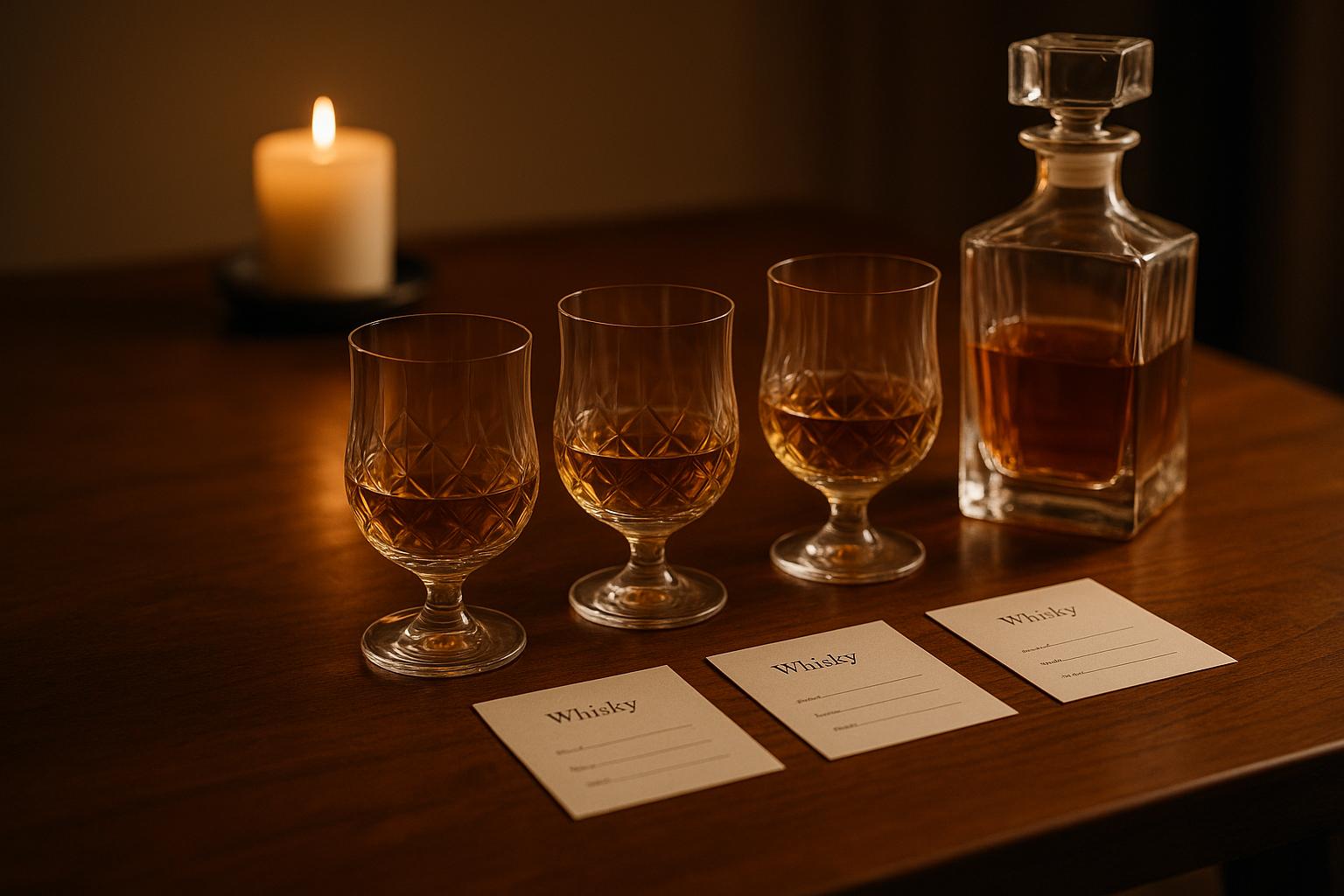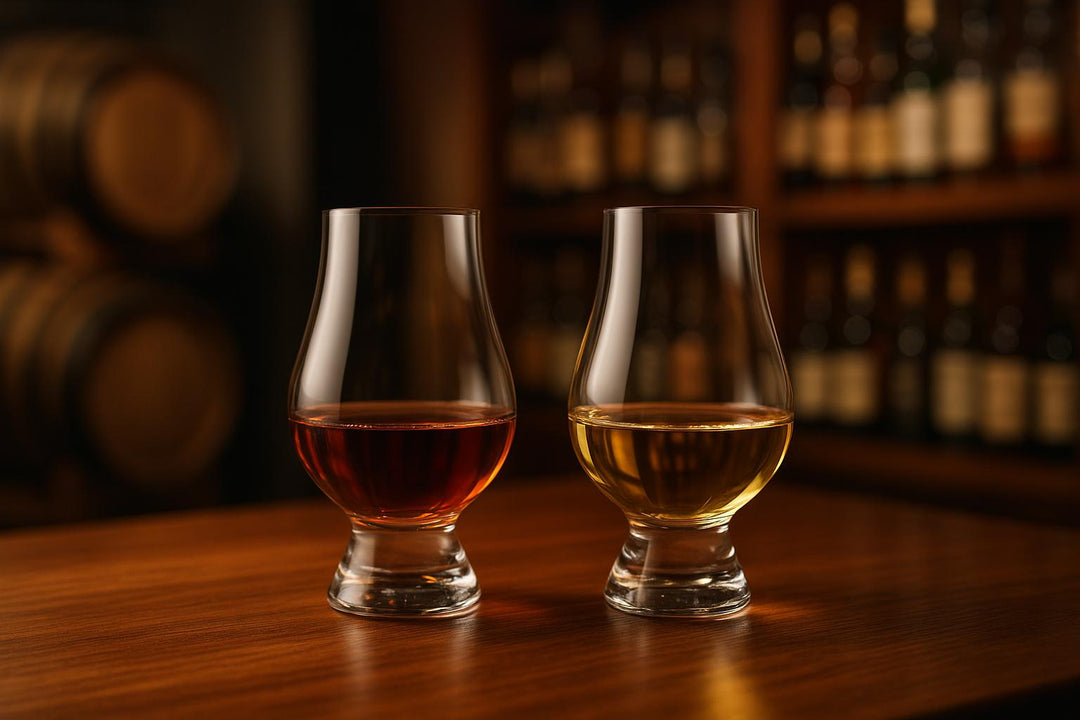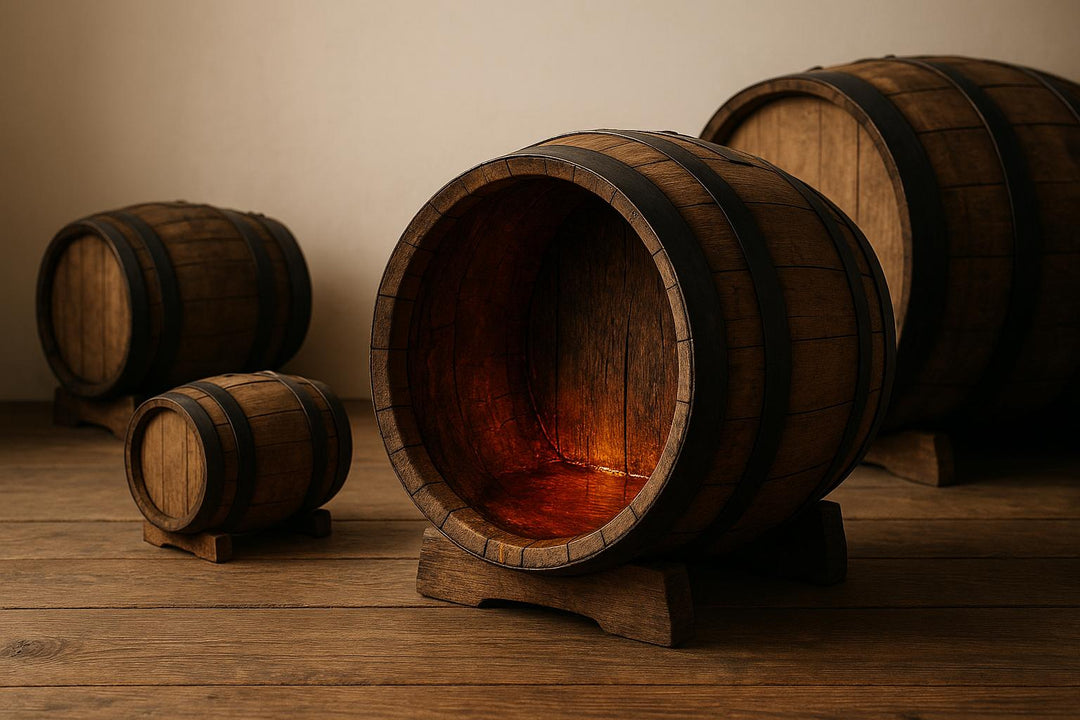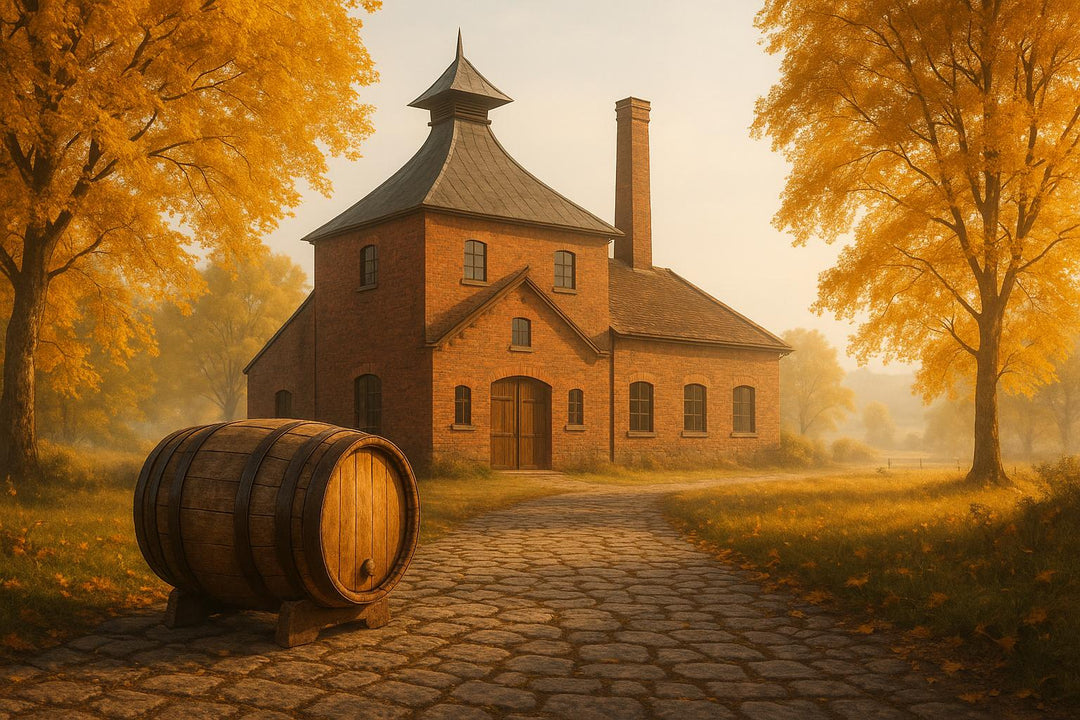Hosting a whisky tasting at home is simpler than you might think and can turn an ordinary gathering into an engaging experience. Here’s how to do it:
- Pick a theme: Whether it’s exploring whisky regions, comparing cask finishes, or blind tasting, a theme adds structure and focus.
- Choose 4–5 whiskies: Start with lighter options and progress to bolder flavours. Include a mix of styles, regions, or ages to keep it interesting.
- Set the scene: Use proper glassware (like Glencairn glasses), soft lighting, and background music. Avoid strong scents in the room.
- Invite the right group: Limit your guest list to 6–10 people for a more intimate atmosphere.
- Guide the tasting: Walk guests through observing, nosing, tasting, and discussing each whisky. Provide tasting sheets for notes.
- Add personal touches: Custom glassware, rare bottles, or themed decor can make the event memorable.
A whisky tasting combines education and enjoyment, offering guests a chance to discover new favourites while sparking great conversations. With a little preparation, you can create an evening your guests won’t forget.
A COMPLETE Guide to Hosting a PROPER Whisky Tasting
Planning Your Whisky Tasting Event
Thoughtful planning is the cornerstone of a successful whisky tasting. From selecting the right date to creating an inviting atmosphere, getting the details right ensures an evening of relaxed conversation and discovery. Here's how to organise an event that flows smoothly and leaves a lasting impression.
Choosing the Right Date, Time, and Venue
Evenings or weekends work best for whisky tastings, as they allow guests to unwind and enjoy the event without weekday pressures [4]. Pick a venue that exudes charm and comfort - a cosy lounge, a private whisky cellar, or even your living room with dim lighting and a welcoming layout can set the perfect tone. Arrange seating in a circular or U-shaped format to encourage interaction and let the whisky shine [3] [4]. To add to the ambience, consider playing soft jazz or instrumental music in the background [3].
Once the setting is sorted, it’s time to think about who will join the event.
Creating the Guest List and Sending Invitations
For a more intimate and engaging experience, limit your guest list to 6–10 people [6]. Aim for a mix of whisky enthusiasts and curious newcomers to spark lively discussions and shared learning.
Send out invitations 2–3 weeks before the event to give everyone enough time to plan [7]. Include all the key details - date, time, location, and any special requests. If you'd like attendees to bring a bottle or a snack, make sure to specify this in the invite. To account for last-minute cancellations, consider inviting around 12 people if you’re hoping for 8 attendees.
Setting a Theme for the Tasting
A good theme not only guides the tasting but also enriches the experience by adding structure and focus [9]. Regional themes are a popular choice - explore Scotland’s whisky regions, such as Speyside, Islay, or the Highlands, with one bottle representing each area. This approach provides a geographical lens for comparison.
You could also try age-based themes, like whiskies distilled in a particular year, or high-proof options featuring whiskies over 140 proof [10]. Themes based on cask finishes can be especially engaging - pair whiskies aged in sherry, port, or beer casks with small samples of the respective beverages to highlight how the cask influences flavour.
"When we have clear, interesting themes we sell out the events in under 24 hours", says Josh Peters, a member of Malt Nuts and the Southern California Whiskey Club (SCWC) [10].
For a fun twist, consider hosting a blind tasting. Guests can sample whiskies without knowing their identities, focusing solely on the flavours and aromas [11]. Whether you choose a theme that’s educational, like comparing single malts to blends, or something more playful, like showcasing vintage releases, the key is to give your guests a framework to better appreciate what’s in their glass [10].
Selecting Your Whiskies
The whiskies you choose will shape the entire tasting experience. Striking the right balance between variety and cohesion is essential - each dram should bring something distinct to the table while aligning with your chosen theme. The goal? To create a journey that’s both educational and enjoyable, without overwhelming anyone's palate.
Choosing 4–5 Whiskies for the Event
Stick to 4–5 whiskies for your tasting. This keeps the experience focused, prevents palate fatigue, and allows each bottle to be savoured fully.
Aim for diversity by including whiskies from different styles and regions. Mix familiar classics with lesser-known bottles to keep things interesting [13]. Key factors to consider include the whisky’s age, cask type (like wine or bourbon barrels), smokiness, and alcohol strength [14].
Start with lighter, lower-alcohol whiskies and gradually move towards bolder, more complex options [5][8]. For instance, if the theme is Scottish regions, you could begin with a gentle Speyside single malt, transition to a Highland dram, and finish with a robust Islay whisky.
If your focus is on cask finishes, begin with bourbon barrel-aged whiskies, then move to sherry or port cask options. For tastings based on age, start with younger whiskies and work your way up to older, more intricate expressions. Keep in mind, bourbon tends to be softer on the palate compared to single malt Scotch [14].
You could also explore vertical tastings (different age statements from the same distillery) or horizontal tastings (whiskies with similar ages or no age statements) [12].
Once you’ve covered the basics, consider adding a rare or premium bottle to make the event truly memorable.
Finding Rare and Premium Options
Including one or two rare whiskies can elevate your tasting to another level. The Really Good Whisky Company is a great resource for rare and vintage bottles, offering a curated selection that spans Scotch, Japanese, American, and other world whiskies. These unique bottles can serve as conversation pieces and add a sense of occasion to your event.
Another option is curated tasting packs. These are professionally assembled to offer variety and progression, and they’re a fantastic way to explore new styles or regions. The Really Good Whisky Company offers packs designed to highlight everything from regional traits to cask finishes, giving you a ready-made selection that aligns with your theme.
For a more tailored approach, consider bespoke services that curate selections based on your event’s theme and your guests’ preferences. This works particularly well for corporate gatherings or special celebrations where you want something truly personal.
Rare bottles from closed distilleries, limited editions, or emerging whisky regions can spark interest and discussion. However, balance is key - pair rare expressions with more accessible options so everyone can enjoy the experience.
Budget is another important factor. If you’re eyeing a £300 bottle, sharing it among eight people works out to about £37.50 per person - a reasonable cost for a special occasion. You could even ask guests to chip in for premium bottles or save the rarest dram for the grand finale, once everyone’s palate is ready to appreciate it.
Don’t forget to think globally. With international shipping, you can source whiskies from countries that aren’t traditional producers. A theme like "Whisky Globetrotting" could feature bottles from unexpected regions, showcasing how different climates and local ingredients shape the character of a whisky. This adds an extra layer of intrigue to your tasting and sets the stage for arranging your space.
Setting Up the Tasting Space
Creating the right atmosphere for a whisky tasting is all about balance. By combining attention to detail with a welcoming setup, you can ensure your guests enjoy both the whisky and the camaraderie.
Tools and Glassware You’ll Need
Once you’ve chosen your whiskies, it’s time to gather the essentials that will elevate the tasting experience.
Start with the right glassware. The Glencairn glass (£7.99) is a classic choice, designed to concentrate aromas while allowing the whisky to breathe. For whiskies with more delicate profiles, the Copita Glass (£14.95) is ideal, while the Libbey Signature Kentucky Bourbon Trail Glass (£9.95) works well for those with a richer body, thanks to its wider bowl [19]. Always opt for clear glass to highlight the whisky’s natural colour [17].
Water is a must-have. Bottled water without minerals is best, as tap water’s chlorine and mineral content can interfere with the whisky’s nuances [18]. A water dropper is handy, letting guests add just a few drops to unlock hidden aromas without over-diluting.
Other essentials include tasting sheets for notes on appearance, aroma, palate, and finish. Plain crackers or oatcakes are perfect for cleansing the palate between drams. Don’t forget practical items like napkins, a dump bucket for excess whisky or rinse water [16], and clear ice for those who prefer their whisky chilled without diluting the flavours too quickly [15].
Setting the Scene for Conversation
The room’s temperature should be comfortable, ideally between 18–22°C [21]. Arrange chairs around a central table in a circular or semi-circular formation to encourage conversation [20]. Lighting also plays a key role - soft, warm, and dimmable lighting works best, as it enhances the whisky’s colour without overpowering its aromas [22].
To keep the focus on the whisky, eliminate competing scents. Ask guests to skip cologne or perfume and to wash their hands before the tasting [20]. Ventilate the room beforehand and avoid materials that trap lingering odours, ensuring a neutral sensory environment [21].
Lastly, make sure the table has enough space for glasses, tasting notes, and water, while still allowing guests to move comfortably. This thoughtful setup creates an environment where guests can immerse themselves in the whisky’s flavours while enjoying lively discussions.
sbb-itb-128d6c1
Running the Tasting
Hosting a whisky tasting is all about creating a relaxed, engaging environment where guests can explore new flavours and enjoy meaningful conversations. A well-structured approach helps ensure everyone has a memorable experience.
Presenting Whiskies in the Right Order
The order in which you present the whiskies plays a big role in the tasting. Start with lighter whiskies and gradually move to bolder, more intense options. This prevents stronger flavours from overshadowing more delicate ones early on.
Begin with light, unpeated single malts or light blends, such as those from Highland or Speyside. These often feature subtle fruit and floral notes that could be lost if followed by heavier whiskies. Next, transition to medium-bodied whiskies, like certain Lowland or Irish expressions, before finishing with peated Islay malts or cask-strength whiskies that pack a punch.
If your selection includes both aged and younger whiskies, focus on intensity rather than age. For instance, a heavily peated 12-year-old Islay whisky might overpower a more delicate 25-year-old Speyside, so it’s better to place the Islay whisky later in the lineup.
To help guests reset their palates between whiskies, provide simple palate cleansers like water or plain crackers. Once the order is set, guide your guests on how to fully experience each whisky.
Teaching the Tasting Process
Not everyone knows how to properly taste whisky, so your role as the host is key. Walk your guests through the four steps: observe, nose, taste, and finish.
Start with visual observation. Encourage guests to hold their glasses up to the light and examine the whisky’s colour. Explain how deeper hues might hint at longer maturation or sherry cask influence, while lighter tones could indicate bourbon cask aging or a younger spirit.
For the nosing stage, demonstrate how to swirl the glass gently to release the aromas. Show them how to take light, short sniffs instead of deep breaths, and point out common notes like vanilla, smoke, or spice. Remind them that there are no wrong answers - each person’s palate is unique, and discovering personal interpretations is part of the enjoyment [2].
When it comes to tasting, suggest taking small sips and letting the whisky coat the entire mouth before swallowing [5]. Encourage them to breathe softly through their nose while the whisky is on their tongue to unlock more flavour nuances.
Finally, discuss the finish - how the flavours linger and what new notes might appear after swallowing. Some whiskies reveal surprising characteristics in the finish that weren’t present during the initial taste.
Once everyone understands the process, encourage them to share their observations and thoughts.
Encouraging Discussion and Note-Taking
Provide tasting cards with sections for colour, aroma, taste, and finish to help guests jot down their impressions and compare notes [23].
Create an inclusive atmosphere where everyone feels comfortable sharing their thoughts. Ask open-ended questions like, “What flavours are you noticing?” and remind guests that all observations are valid [2]. Different perspectives make the discussion richer and more engaging.
If one or two guests dominate the conversation, gently steer the discussion to ensure quieter participants have a chance to speak [1]. You could ask specific questions to individuals or go around the table, giving everyone a turn to share their impressions.
Add depth to the experience by sharing interesting facts about each bottle [23][5]. Mention the distillery’s history, unique production methods, or any awards the whisky has won. These details not only spark conversation but also help guests connect with the whiskies on a deeper level.
To keep the energy up, consider introducing discussion prompts or tasting games [24]. For example, ask guests to rank their favourite whiskies as the tasting progresses or to explain what draws them to certain flavour profiles [23][5]. A little friendly competition can add a fun twist to the evening.
Ultimately, the goal is to create an environment where everyone feels excited to explore, share, and enjoy the journey of whisky tasting. When guests feel comfortable expressing their thoughts, you’ve set the stage for a truly memorable experience.
Making the Event Special
After selecting your whiskies and creating a welcoming space, the addition of personal touches and engaging narratives can turn your whisky tasting into something truly memorable. A well-thought-out whisky tasting is more than just sampling; it’s about crafting an experience that lingers long after the last dram is poured.
Creating the Right Atmosphere
The atmosphere you set plays a pivotal role in shaping the evening. Opt for warm, dim lighting - think table lamps or candles - to highlight the whisky’s rich amber tones and create a cosy, intimate vibe. Avoid harsh overhead lights that can feel impersonal.
Complement the setting with background music that enhances, rather than overpowers, the mood. Gentle instrumental jazz, classical melodies, or acoustic tunes work well. If you’re sticking to a Scotch whisky theme, soft Scottish folk music can subtly reinforce the connection.
Keep the room at a comfortable temperature with proper ventilation to preserve the whisky’s delicate aromas. Small decorative touches, like whisky-themed books or vintage bottles as centrepieces, add charm without being overwhelming.
"A great drink tells a story, but the glass it's served in can transform that story into an unforgettable experience." – Distillery Products [25]
These thoughtful details set the stage for a night to remember.
Adding Custom Elements
Adding personal touches elevates the tasting from enjoyable to unforgettable. Consider custom bottles with engraved messages or monograms - these make meaningful keepsakes that guests can cherish long after the event. Services like The Really Good Whisky Company offer bespoke bottling for milestones like birthdays, anniversaries, or professional achievements.
Custom labels are another way to personalise the experience. Design labels that reflect your event’s theme, include guests’ names, or feature a heartfelt message about the occasion. These small gestures show thoughtfulness and create a deeper connection with your guests.
Providing unique glassware, such as engraved Glencairn glasses or crystal tumblers, adds a touch of sophistication. Not only are they practical for the tasting, but they also double as memorable take-home gifts.
For a fun, interactive element, consider bourbon smoker kits. These allow guests to experiment with infusing their drams with different wood smoke flavours, sparking curiosity and encouraging them to explore how smoke can transform a whisky’s profile.
Even the way you package take-home bottles can leave a lasting impression. Think wooden presentation boxes, leather cases, or custom tissue paper - these details reflect care and attention that guests will appreciate.
Sharing Background Stories
Every bottle of whisky carries a story, and sharing these stories adds depth to the tasting experience. Before the event, take some time to research the history of the distilleries behind your chosen whiskies. Learn about their founding, unique production methods, and any notable traditions or milestones. These details can help tie the evening to the theme you’ve planned.
For example, you might highlight the story of a Japanese distillery founded by a visionary who trained in Scotland, blending Scottish expertise with Japanese craftsmanship. This kind of narrative adds richness to the experience.
Discussing production techniques can also captivate your guests. Whether it’s a unique fermentation process, a specific water source, or an unusual ageing method, these details bring the whisky’s character to life.
Awards and accolades provide additional context. Sharing a whisky’s competition wins or critical scores - and explaining what these honours signify - can deepen appreciation for the quality in each glass.
Finally, personal anecdotes make the experience even more engaging. If you’ve visited a distillery, share what stood out - the scenery, the warehouse atmosphere, or conversations with the distillers. These stories not only personalise the event but also help guests form a stronger connection with the whisky they’re enjoying.
Conclusion and Key Takeaways
Hosting a successful whisky tasting is all about thoughtful preparation, a carefully chosen selection of whiskies, and creating a welcoming atmosphere. When done right, it turns a simple gathering into an enriching and unforgettable experience for everyone involved.
It all starts with planning. Picking the right date, venue, and guest list - aiming for a cosy group of 6–10 people - helps set the stage for a smooth and enjoyable event. Once the logistics are in place, the focus shifts to curating a whisky lineup that takes your guests on a journey of flavours. Aim for a diverse selection that aligns with your theme, offering a range of styles and profiles. Keep the pours manageable to ensure guests can fully savour each whisky without overwhelming their palate.
The whiskies you choose play a central role in shaping the experience. A mix of styles - from light and grain-forward options to bold, peaty drams - provides a glimpse into whisky's vast and varied world. Including one standout bottle, perhaps something rare or premium, adds a touch of excitement and sparks lively conversation among your guests [27].
The atmosphere you create is just as important. Details like proper glassware and tasting notes enhance the sensory aspect, while fostering open discussions and sharing the stories behind each whisky turn the event into an engaging and educational experience. These thoughtful touches encourage guests to connect, learn, and appreciate whisky on a deeper level [26][22].
For those looking to elevate their tasting events, The Really Good Whisky Company offers expert curation and premium options that can transform any gathering. Their whisky tasting packs, bespoke bottling services, and custom labelling make it easy to personalise the experience. Whether you're marking a special occasion or simply sharing your love for whisky, their rare and world-class selections introduce guests to whiskies they might never have tried before.
Ultimately, a great whisky tasting strikes a balance between education and enjoyment. By combining meticulous planning, a well-thought-out whisky selection, and a welcoming environment, you create a memorable event that not only deepens appreciation for whisky but also brings people together in a shared journey of discovery.
FAQs
How do I choose a whisky theme that appeals to both beginners and connoisseurs?
Selecting the perfect whisky theme can set the tone for an event that appeals to everyone. You might explore themes such as whiskies from various regions like Scotland, Japan, or the US, delve into different styles such as single malt, blended, or cask strength, or even focus on age statements. These ideas offer diversity and can cater to a wide range of palates and experience levels.
To make the experience even more engaging, include a mix of well-known favourites and more unusual options. Sprinkle in some fascinating facts about each whisky to add an educational twist. This way, both beginners and seasoned whisky lovers can enjoy the event and discover something new.
How can I make a private whisky tasting event unique and memorable for my guests?
To create a whisky tasting event that stands out, begin by selecting whiskies that cater to your guests' tastes - be it the peaty richness of Scotch, the refined smoothness of Japanese whisky, or the bold character of American bourbon. Add a personal flair with themed decorations, customised tasting notes, or even branded glassware to make the experience feel unique. For a more interactive touch, encourage your guests to experiment with water ratios or offer food pairings that complement the whiskies. These small but thoughtful touches will make your event both enjoyable and memorable.
How can I create a balanced selection of whiskies for a tasting event?
To create an enjoyable whisky tasting experience, choose 3 to 5 whiskies that represent a mix of styles, ages, and flavour profiles. Begin with lighter, milder options and gradually move towards whiskies with richer, more intense flavours. For variety, you might include single malts, blends, or whiskies from different regions, such as Scotland, Japan, or the United States.
This thoughtful selection offers a smooth progression through the tasting, allowing each whisky's unique character to shine. Tailor the choices to suit your guests' tastes, and consider providing tasting notes or pairing ideas to make the experience even more engaging.






Leave a comment